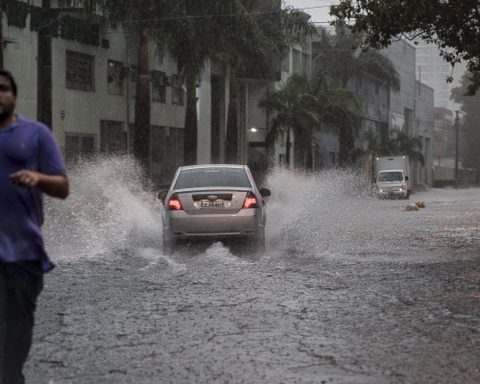This Wednesday, November 30, the Ministry of Mines and Energy carried out the third of the increases in gasoline that he announced for the last months of the year. In this way and as announced by President Gustavo Petro, since he assumed the reins of the Nation, there has been a triple string of increases of $600. Thus, its average for this end of the year will be $9,778 for the 13 main cities.
(Read: These are the gas prices in December city by city).
In the course of the year the average of this fuel has gone up $730that is, compared to the figure with which this energy will be governed in December, compared to January, the increase was 8.07%.
According to data from the National Administrative Department of Statistics (Dane), so far in 2022, fuels have had a rise of 5.3%. This is taking into account that diesel has not had adjustments in the second semester since the government indicated that it could have a negative impact on inflation, which this year has climbed to 12.2% (until October).
One of the direct impacts of escalating the price of gasoline is in transportation. According to Sergio Cabrales, a professor at the Universidad de los Andes and an expert in the sector, he explained that private transportation is the one with the highest gasoline consumption.
He added that, according to the Ministry of Finance, for every $1,000 raised by both fuels, the cost of living increases 0.65%. However, it must be taken into account that only gasoline has risen and it has done so by 60% of the value estimated by the portfolio, so the inflationary impact may be less.
(In addition: Vehicles dedicated to gas go for a second year of decline in sales).
In this regard, Julio César Vera, president of the Xua Energy Foundation, stressed that there is also a factor of speculation in the rise in transportation. “The analyzes indicate that a 10% rise in fuels generates an additional 1.3 points in global inflation, the rest is considered speculationVera pointed out.
He also asserted that the greatest impact on the cost of living would be in gasoline. The Acpm would weigh 0.5 percentage points out of the 1.3 it would scale for every 10% that fuels rise; that is, gasoline weighs 0.8 points.
He noted that this could lead to adjustments to this fuel, whose national average for December is $9,008.
However, Cabrales pointed out that diesel can have more impacts on the cost of living, since heavy transport, as well as freight and food transport are directly affected by the rise in this fuel. “The responsible thing would be to raise the price of Acpm, but politically this adjustment may not take place”, he assured.
However, the objective of these increases is related to the decrease in the deficit in the Fuel Price Stabilization Fund (Fepc). This year, the debt of this fund could scale to more than $38 billionaccording to calculations by the Autonomous Committee of the Fiscal Rule, of which about 55% will be produced by gasoline and the rest by diesel.
(In addition: The start date of the 50% discount on the Soat for motorcycles is postponed).
The hikes they will generate an impact of $600,000 million of reduction according to the committee this year. However, Cabrales confirmed that the contraction would be minor. In the three months of increases, the total sum would be $240,000 million, $40,000 that would occur in October, $80,000 million in November and $120,000 million in the last month of the year.
For this reason, he considers that the increases should be continued. In fact, Vera explained that the speculation factor tends to decrease when the adjustments are constant.
BRIEFCASE
















